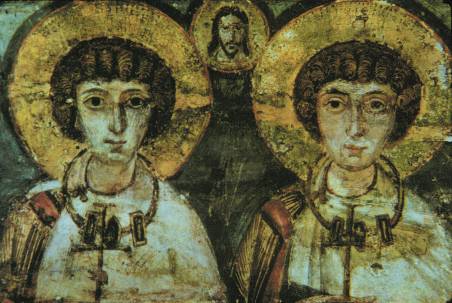Same-sex unions in Premodern Europe, John Boswell, 1994
- Written records of marriages generally exist to resolve issues of property and inheritance. So in European history they are only really needed when at least one of the parties is a man who owns property. Marriages of the poor, and between women, tend not to be recorded.
- Records of ancient Roman same-sex marriages are often described as business relationships, and given as evidence that the nature of marriage has changed over time. A simpler explanation is that the idea of marriage has remained a constant, always involving love and sex, and that the primary sources are, well, they're pretty explicit, but not so explicit that later historians were unable to project their own biasses onto them.
(Homosexuality was of course common in the ancient Roman empire. Also, the pater familias had pretty much free sexual license over his familia (family and slaves). The question is whether there were legally recognized relationships between equals, as in our modern concept of marriage. Equality at this time meant it had to be between two males.)
- There are many copies of medieval same-sex marriage rites from Orthodox Christianity, and a few even from Italy and Western Europe. Often these invoke the story of Saints Sergius and Bacchus (pictured below with Jesus as best man). The wording is similar to heterosexual marriage rites, and different to adoption ceremonies, making the intent obvious if one sets aside one's prejudices.

- 9th century Byzantine emperor Basil I, was a pretty farm boy who, ahem, fucked his way to co-emperorship and then killed the emperor, Michael III. Again, primary sources are pretty explicit. He then greatly enhanced the Byzantine system of laws, and it has to be said that Michael wasn't all that great. Amongst other things, this serves to demonstrate the normality of same-sex unions at this time.
- In the 14th century same-sex unions stop appearing in books of official church services. This corresponds with a general rise in intolerance for gay and lesbian orientation. The reason for this is unclear.